Midweek Review
Govt. in dilemma over anti-terrorism law:
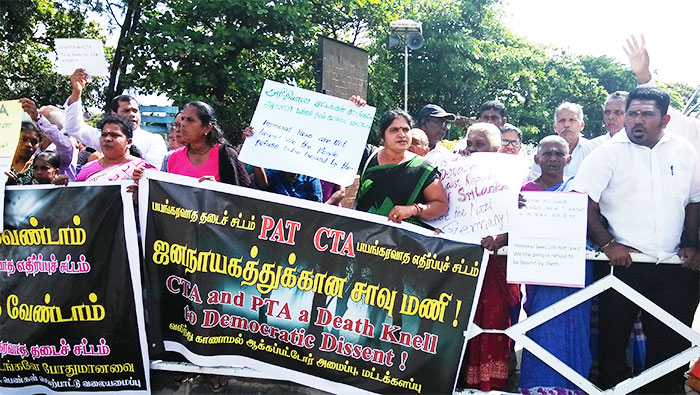
No letup in Int’l, civil society pressure
By Shamindra Ferdinando
Under any circumstances, post-war Sri Lanka cannot ignore international concerns as regards the Prevention of Terrorism (Temporary Provisions) Act (No 48 of 79).
A section of the international community wants Sri Lanka to amend the PTA without further delay. The civil society organisation, One-Text Initiative (OTI) has pointed out repealing the PTA is a necessity underscored by the European Union and the Geneva-based United Nations Human Rights Council (UNHRC) as well as by Western-funded civil rights organisations and international agencies. It would be pertinent to mention that the OTI came into being in 2003 in the wake of the Norway arranged Ceasefire Agreement (CFA). The CFA, too, made reference to the PTA. The following is the relevant section 2.12: The parties agree that search operations and arrests under the Prevention of Terrorism Act shall not take place. Arrests shall be conducted under due process of law in accordance with the Criminal Procedure Code. Therefore, the public should know the PTA had been an issue for the LTTE, too.
Following the 5th Meeting of the European Union – Sri Lanka Working Group on Good Governance, Rule of Law and Human Rights on Sept. 29, 2021, they issued a comprehensive statement.
Let me reproduce the relevant section verbatim: “Sri Lanka provided an update on the action in process to review the Prevention of Terrorism Act, and reiterated its commitment to bring it in line with international norms and standards within a time bound process. The EU and Sri Lanka agreed to take stock of the progress in this regard by the next meeting of the EU-Sri Lanka Joint Commission in early 2022. The need to uphold international norms and standards of human rights while countering terrorism and violent extremism was also underlined.”
OTI last Monday (25) arranged a discussion on the PTA and its impact with the participation of lawyer Chrishmal Warnasuriya, Dr Paikiasothy Sarawanamuttu, UK-based Amal Abeywardene and the writer. Harindra B Dassanayake moderated the two-hour discussion. All agreed with Dr. Sarawanamuttu’s call for a moratorium of the PTA until the government and those engaged in discussions on the future of the security law reached a consensus. The civil society guru also suggested until consensus could be reached on the issue at hand, the Attorney General should be authorised to facilitate bail to those held under the PTA. That proposal, too, should be seriously considered. OTI raised specific issues relating to the PTA. Why does the reforming/ repealing of PTA matter? , What is the situation now, and what is likely to happen? Are there options for Sri Lanka, and with what consequences? What hinders change? And what paths and steps are recommended? The OTI initiative should be appreciated.
Western powers are eternally interested in accountability issues and related matters here. However, there is no such enthusiasm to correct far worse continuing wrongs in places like Egypt, Israel or for that matter the continuing genocide in Yemen, thanks to Saudi Arabia and UAE or against international drug rings freely operating from capitalist citadels, like Dubai!
Since the end of the war in May 2009, the GoSL (Government of Sri Lanka) has been under tremendous pressure to either abolish the PTA or amend it in line with laws in place in other parts of the world. Do we need anti-terrorism laws? Do they serve any purpose or strengthen Sri Lanka’s response to terrorist challenge? Sri Lanka should have examined how PTA facilitated the country’s overall response to terrorism.
Unfortunately, successive governments conveniently failed to do so just to appease the West fearing a greater orchestrated outcry against the country, thereby contributed to some international efforts to discredit the Sri Lankan military as well as the law enforcement apparatus.
The country experienced two terrorist campaigns in the South in 1971 and 1987-1990 and the 30-year-old war spearheaded by the LTTE. Sri Lanka defeated all three attempts through military means. The country had no option but to deal militarily with terrorism and conventional military challenge, regardless of opposition. Some sections of the international community oppose the PTA. But no one talks about draconian anti-terror laws in place for example in the USA or the UK since 9/11 and thereafter.
They always boast about a rules-based order followed by the international community. What is this international community? It is nothing but a self-appointed handful of countries in the West that earlier plundered much of the world at their will.
Interestingly, almost all those countries demanding abolition or amendments to the PTA provide refuge to those who should have been dealt with in terms of anti-terrorism laws. Those countries swiftly accept accusations that the PTA is used widely and indiscriminately at the expense of public freedom and also against political opponents.
Focus on PTA cases
 Let me briefly refer to four recent cases that had attracted international attention due to some of those involved being arrested in terms of the PTA, as well as accusations relating to Sri Lankans seeking political refuge overseas: (i) Arrest of Attorney-at-Law Hejaaz Hizbullah in April 2020 over his alleged involvement in the 2019 Easter Sunday carnage (ii) the recent Inter-Parliamentary Union (IPU) statement on the arrest and the subsequent release of All Ceylon Makkal Congress (ACMC) leader and MP representing the Samagi Jana Balavegaya (SJB) Rishad Bathiudeen. The MP was also taken into custody in terms of the PTA over the Easter Sunday attacks blamed on National Thowheed Jamaat. It would be pertinent to mention that the IPU represents altogether nearly 180 Parliaments all over the world (iii) New Zealand police killing Ahamed Adhil Mohamed Samsudeen, 31, who had secured political asylum therein in Dec 2013 on the basis of him being under threat in Sri Lanka. No less a person than New Zealand Prime Minister Jacinda Ardern has admitted how the man from Kattankudy, who knifed several persons in an Auckland shopping mall received inspiration from ISIS (iv) New Zealand granting political asylum to a Sri Lankan wanted in connection with the Easter Sunday attacks. The suspect also wanted under the PTA received New Zealand protection soon after the mayhem in the shopping mall.
Let me briefly refer to four recent cases that had attracted international attention due to some of those involved being arrested in terms of the PTA, as well as accusations relating to Sri Lankans seeking political refuge overseas: (i) Arrest of Attorney-at-Law Hejaaz Hizbullah in April 2020 over his alleged involvement in the 2019 Easter Sunday carnage (ii) the recent Inter-Parliamentary Union (IPU) statement on the arrest and the subsequent release of All Ceylon Makkal Congress (ACMC) leader and MP representing the Samagi Jana Balavegaya (SJB) Rishad Bathiudeen. The MP was also taken into custody in terms of the PTA over the Easter Sunday attacks blamed on National Thowheed Jamaat. It would be pertinent to mention that the IPU represents altogether nearly 180 Parliaments all over the world (iii) New Zealand police killing Ahamed Adhil Mohamed Samsudeen, 31, who had secured political asylum therein in Dec 2013 on the basis of him being under threat in Sri Lanka. No less a person than New Zealand Prime Minister Jacinda Ardern has admitted how the man from Kattankudy, who knifed several persons in an Auckland shopping mall received inspiration from ISIS (iv) New Zealand granting political asylum to a Sri Lankan wanted in connection with the Easter Sunday attacks. The suspect also wanted under the PTA received New Zealand protection soon after the mayhem in the shopping mall.
Hizbullah’s arrest was also taken up by the UK-led Sri Lanka Core Group at the UNHRC as well as by HRC Michelle Bachelet. In spite of Hizbullah personally knowing two of the Easter bombers and their father, Mohammad Yusuf Ibrahim, he should be considered innocent until found guilty in a court of law.
Hizbullah knew them as he had represented the wealthy family in court and his right as a lawyer to represent anyone should never be questioned whatever the accusations directed at his clients. The UN, foreign government and the civil society, too, should have the right to represent the interests of anyone regardless of the accusations. In the absence of own legal representation or the inability to procure legal services, suspects, whatever the accusations directed at them, reserved the right to obtain legal support from the Attorney General’s Department.
Similarly, the State, in this case the Sri Lanka State shouldn’t give up its right to take security measures deemed necessary to protect the public. The government cannot forfeit its right to defend the public against acts of terrorism. However, every effort should be made to address concerns of the UN and the EU as regards the PTA.
Most importantly, the government should respond to concerns raised by the Tamil National Alliance (TNA) and all other political parties representing the Tamil speaking people as well as the civil society such as the Centre for Policy Alternatives (CPA).
The incumbent government in June this year appointed a high powered committee chaired by Defence Secretary Gen. Kamal Gunaratne to examine the PTA. The Committee has been asked to recommend whether to suitably amend the current law or introduce new counter-terrorism law.
Prez wants PTA examined
President Gotabaya Rajapaksa’s decision to examine the Counter Terrorism Act (CAT) prepared on the instruction of former Premier Ranil Wickremesinghe should be appreciated. Gen. Gunaratne’s committee received specific instructions to study the CAT. The government should be ashamed of its failure to undertake a comprehensive study on the PTA before foreign powers intervened. Having examined the CAT, the writer is quite convinced it addressed concerns of all.
Prepared by the previous government in consultations with the British, French, EU et al, the CAT can be the basis for proposed new law or facilitate required amendments to the existing PTA.
Sri Lanka should seek a guarantee as regards comprehensive cooperation from Western governments to address threats posed by terrorism. They cannot ignore such a request on the basis of their domestic laws. A lot depends on international cooperation to fight terrorism. Western powers no longer can deny their response to terrorism elsewhere, in a way, promoted terrorism on their soil. How many Sri Lankan terrorists received political asylum in those countries, particularly in the UK, Canada and Germany? Sri Lanka cannot forget the fact that Western powers at least do not share information regarding missing persons. How many thousands of those categorised as missing or disappeared Lankans live overseas under different names.
The recent assassination of ruling party British lawmaker David Amess, 69, is a case in point. The police arrested 25-year-old Ali Harbi Ali, British passport holder of Somali origin over the stabbing in a church east of London. Hope the British investigate the circumstances under which the assassin received British nationality. Having declared the MP’s killing an act of terrorism, the British should conduct a no holds barred investigation. The British media reported the suspect has been detained in terms of additional powers under anti-terrorism laws.
In June 2016, another terrorist, who believed in white power, assassinated 41-year-old Jo Cox. She was shot thrice and then stabbed 15 times. The British cannot turn a blind eye to the growing threat posed by terrorism. Perhaps, law enforcement authorities require wider powers to deal with new threats.
Incidents in New Zealand, Norway, France, Germany and other countries must influence governments to take sufficient measures to ensure public protection. The civil society as well as international organisations, such as IPU, too, should be accountable for campaigns they do. They should be mindful of their actions.
The IPU’s right to be concerned over MP Bathiudeen’s detention should be respected. There shouldn’t be any issue over IPU’s response to the Sri Lankan politician’s arrest. Let the IPU closely examine MP Bathiudeen’s case. Perhaps, the IPU should make its position public on the assassination of Sri Lankan Foreign Minister Lakshman Kadirgamar and clandestine meeting the Norwegian government had with the LTTE’s British advisor Anton Balasingham in the UK to discuss ways and means of managing the fallout.
Those who want Sri Lanka to adhere to international standards in the formulation of anti-terrorism laws should be reminded how Commonwealth heavyweight India destabilised Sri Lanka. The transformation of Sri Lanka’s ceremonial armed forces to one of the best fighting forces in the world should be studied against the backdrop of Indian intervention. Sri Lanka needed the PTA as part of the overall measures against terrorism. Can anyone honestly declare that clandestine LTTE operations in Colombo and its suburbs could have been thwarted without the PTA.? Sri Lanka had no option but to fight back. The PTA had been part of the overall defence. The PTA should be discussed taking into account high profile terrorist operations in the South that resulted in political assassinations. Perhaps, the PTA hadn’t been enough to neutralise the LTTE. They succeeded in assassinating President Ranasinghe Premadasa on May Day 1993, made an abortive bid to assassinate Chandrika Bandaranaike Kumaratunga at the final PA rally ahead of the 1999 presidential election, blew up over 50 people, including UNP presidential candidate Gamini Dissanayake in late Oct 1994, suicide attack on the then Lt. Gen. Sarath Fonseka and Defence Secretary Gotabaya Rajapaksa in April 2006 and Oct 2009, respectively. All those responsible for the above-mentioned terrorist attacks came to the South as innocent civilians until the moment they transformed themselves into human bombs.
Those who demand that the government treat terrorist suspects with respect did nothing when the LTTE blasted civilians outside the war zone while mingling with ordinary people. Interestingly, years before the ISIS influenced terrorists, the LTTE inspired Norway’s worst ever terrorist attack. The far–right Norwegian terrorist who massacred 77 people, including dozens of children, is on record as having explained how LTTE terrorism directed at Muslims inspired him.
International interventions
The EU’s strong push against Sri Lanka’s current anti-terrorism law should be examined taking into consideration its demand to do away with the death penalty.
The EU-Sri Lanka joint statement issued following the Sept. 21, 2021 meeting also dealt with the death penalty, even though the death penalty had not been carried out in the country since the mid-’70s. The relevant section is as follows: “The EU reiterated its opposition to the death penalty in all circumstances. Welcoming the continued moratorium, the EU encouraged Sri Lanka to take steps towards the formal abolition of capital punishment.”
How is it that the EU is so concerned about Sri Lanka’s dormant death penalty, but didn’t lift a finger to spare the life of Saddam Hussein or the cold blooded killing of Libyan Leader Muammar Gaddafi, both deaths instigated by the West?
The abolition of the PTA or enactment of new anti-terrorism law should be discussed with push for a new Constitution. The successful conclusion of the war over 12 years ago opened up a new front. The Geneva Human Rights Council got involved with the move to draft a new constitution here. Premier Wickremesinghe spearheaded that effort, too, the way he had handled unfinished project to introduce new anti-terrorism law. In fact, co-sponsorship of the 2015 Geneva resolution had been in line with the overall game plan that brought Maithripala Sirisena into power in January 2015. Following the August 2015 general election, Wickremesinghe enjoyed a commanding position in Parliament with which he could have had achieved major political objectives if not for the Treasury bond scams perpetrated in Feb 2015 and March 2016. That is the undeniable truth.
Having lambasted the UNP, both in and outside Parliament, for planning to do away with the PTA at the behest of Western powers, the SLPP is working with the same lot to either amend or introduce new anti-terrorism laws.
The government seems incapable of at least presenting Sri Lanka’s case before the international community properly. Sri Lanka should discuss application of anti-terrorism laws during the deployment of the IPKF (Indian Peace Keeping Force). Did the world care about what really happened in Sri Lanka’s Northern and Eastern provinces during the IPKF deployment? Having destabilised Sri Lanka, India forced the then government to ‘accept’ the IPKF in terms of the Indo-Lanka accord signed on July 29, 1987.
Those who had been detained by the IPKF on suspicion were not handed over to Sri Lanka police for investigations. Therefore, the PTA didn’t matter. The IPKF hadn’t been accountable at all in respect of operations conducted here and those who want Sri Lanka hauled up before foreign judges over alleged war crimes /accountability issues are conveniently silent on the period India had been responsible for Northern and Eastern districts.
Easter Sunday carnage
If not for the Easter Sunday carnage, the UNHRC and the EU would have definitely demanded the abrogation of the PTA. The Western funded civil society, too, would have pushed for the same. Sri Lanka would have found it extremely difficult to justify the need for continuation of anti-terrorism laws. However, the Easter Sunday massacre proved that a country cannot take security for granted. Sri Lanka’s failure to deal with specific intelligence provided by India pertaining to impending terrorist attack, too, should be dealt in terms of the PTA.
Accusations that the Sri Lanka Podujana Peramuna (SLPP) benefited at the presidential and parliamentary polls, respectively, as a result of the Easter attacks cannot be ignored. No less a person than Malcolm Cardinal Ranjith has repeatedly raised that issue against the backdrop of the incumbent government’s failure to implement recommendations of the Presidential Commission of Inquiry (PCoI) that inquired into the Easter attacks.
Interestingly, the then Premier Ranil Wickremesinghe used the Easter attacks to justify his government’s bid to replace the PTA with a new counter-terrorism law.
Features
Handunnetti and Colonial Shackles of English in Sri Lanka
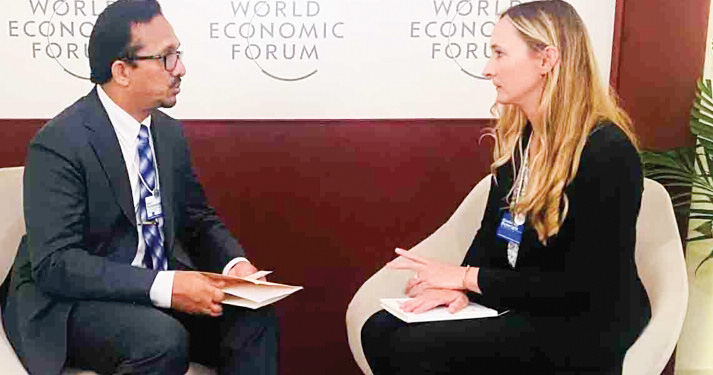
“My tongue in English chains.
I return, after a generation, to you.
I am at the end
of my Dravidic tether
hunger for you unassuaged
I falter, stumble.”
– Indian poet R. Parthasarathy
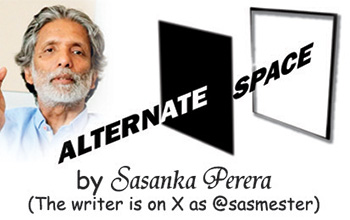 When Minister Sunil Handunnetti addressed the World Economic Forum’s ‘Is Asia’s Century at Risk?’ discussion as part of the Annual Meeting of the New Champions 2025 in June 2025, I listened carefully both to him and the questions that were posed to him by the moderator. The subsequent trolling and extremely negative reactions to his use of English were so distasteful that I opted not to comment on it at the time. The noise that followed also meant that a meaningful conversation based on that event on the utility of learning a powerful global language and how our politics on the global stage might be carried out more successfully in that language was lost on our people and pundits, barring a few commentaries.
When Minister Sunil Handunnetti addressed the World Economic Forum’s ‘Is Asia’s Century at Risk?’ discussion as part of the Annual Meeting of the New Champions 2025 in June 2025, I listened carefully both to him and the questions that were posed to him by the moderator. The subsequent trolling and extremely negative reactions to his use of English were so distasteful that I opted not to comment on it at the time. The noise that followed also meant that a meaningful conversation based on that event on the utility of learning a powerful global language and how our politics on the global stage might be carried out more successfully in that language was lost on our people and pundits, barring a few commentaries.
Now Handunnetti has reopened the conversation, this time in Sri Lanka’s parliament in November 2025, on the utility of mastering English particularly for young entrepreneurs. In his intervention, he also makes a plea not to mock his struggle at learning English given that he comes from a background which lacked the privilege to master the language in his youth. His clear intervention makes much sense.
The same ilk that ridiculed him when he spoke at WEF is laughing at him yet again on his pronunciation, incomplete sentences, claiming that he is bringing shame to the country and so on and so forth. As usual, such loud, politically motivated and retrograde critics miss the larger picture. Many of these people are also among those who cannot hold a conversation in any of the globally accepted versions of English. Moreover, their conceit about the so-called ‘correct’ use of English seems to suggest the existence of an ideal English type when it comes to pronunciation and basic articulation. I thought of writing this commentary now in a situation when the minister himself is asking for help ‘in finding a solution’ in his parliamentary speech even though his government is not known to be amenable to critical reflection from anyone who is not a party member.
The remarks at the WEF and in Sri Lanka’s parliament are very different at a fundamental level, although both are worthy of consideration – within the realm of rationality, not in the depths of vulgar emotion and political mudslinging.
The problem with Handunnetti’s remarks at WEF was not his accent or pronunciation. After all, whatever he said could be clearly understood if listened to carefully. In that sense, his use of English fulfilled one of the most fundamental roles of language – that of communication. Its lack of finesse, as a result of the speaker being someone who does not use the language professionally or personally on a regular basis, is only natural and cannot be held against him. This said, there are many issues that his remarks flagged that were mostly drowned out by the noise of his critics.
Given that Handunnetti’s communication was clear, it also showed much that was not meant to be exposed. He simply did not respond to the questions that were posed to him. More bluntly, a Sinhala speaker can describe the intervention as yanne koheda, malle pol , which literally means, when asked ‘Where are you going?’, the answer is ‘There are coconuts in the bag’.
He spoke from a prepared text which his staff must have put together for him. However, it was far off the mark from the questions that were being directly posed to him. The issue here is that his staff appears to have not had any coordination with the forum organisers to ascertain and decide on the nature of questions that would be posed to the Minister for which answers could have been provided based on both global conditions, local situations and government policy. After all, this is a senior minister of an independent country and he has the right to know and control, when possible, what he is dealing with in an international forum.
This manner of working is fairly routine in such international fora. On the one hand, it is extremely unfortunate that his staff did not do the required homework and obviously the minister himself did not follow up, demonstrating negligence, a want for common sense, preparedness and experience among all concerned. On the other hand, the government needs to have a policy on who it sends to such events. For instance, should a minister attend a certain event, or should the government be represented by an official or consultant who can speak not only fluently, but also with authority on the subject matter. That is, such speakers need to be very familiar with the global issues concerned and not mere political rhetoric aimed at local audiences.
Other than Handunnetti, I have seen, heard and also heard of how poorly our politicians, political appointees and even officials perform at international meetings (some of which are closed door) bringing ridicule and disastrous consequences to the country. None of them are, however, held responsible.
Such reflective considerations are simple yet essential and pragmatic policy matters on how the government should work in these conditions. If this had been undertaken, the WEF event might have been better handled with better global press for the government. Nevertheless, this was not only a matter of English. For one thing, Handunnetti and his staff could have requested for the availability of simultaneous translation from Sinhala to English for which pre-knowledge of questions would have been useful. This is all too common too. At the UN General Assembly in September, President Dissanayake spoke in Sinhala and made a decent presentation.
The pertinent question is this; had Handunetti had the option of talking in Sinhala, would the interaction have been any better? That is extremely doubtful, barring the fluency of language use. This is because Handunnetti, like most other politicians past and present, are good at rhetoric but not convincing where substance is concerned, particularly when it comes to global issues. It is for this reason that such leaders need competent staff and consultants, and not mere party loyalists and yes men, which is an unfortunate situation that has engulfed the whole government.
What about the speech in parliament? Again, as in the WEF event, his presentation was crystal clear and, in this instance, contextually sensible. But he did not have to make that speech in English at all when decent simultaneous translation services were available. In so far as content was concerned, he made a sound argument considering local conditions which he knows well. The minister’s argument is about the need to ensure that young entrepreneurs be taught English so that they can deal with the world and bring investments into the country, among other things. This should actually be the norm, not only for young entrepreneurs, but for all who are interested in widening their employment and investment opportunities beyond this country and in accessing knowledge for which Sinhala and Tamil alone do not suffice.
As far as I am concerned, Handunetti’s argument is important because in parliament, it can be construed as a policy prerogative. Significantly, he asked the Minister of Education to make this possible in the educational reforms that the government is contemplating.
He went further, appealing to his detractors not to mock his struggle in learning English, and instead to become part of the solution. However, in my opinion, there is no need for the Minister to carry this chip on his shoulder. Why should the minister concern himself with being mocked for poor use of English? But there is a gap that his plea should have also addressed. What prevented him from mastering English in his youth goes far deeper than the lack of a privileged upbringing.
The fact of the matter is, the facilities that were available in schools and universities to learn English were not taken seriously and were often looked down upon as kaduwa by the political spectrum he represents and nationalist elements for whom the utilitarian value of English was not self-evident. I say this with responsibility because this was a considerable part of the reality in my time as an undergraduate and also throughout the time I taught in Sri Lanka.
Much earlier in my youth, swayed by the rhetoric of Sinhala language nationalism, my own mastery of English was also delayed even though my background is vastly different from the minister. I too was mocked, when two important schools in Kandy – Trinity College and St. Anthony’s College – refused to accept me to Grade 1 as my English was wanting. This was nearly 20 years after independence. I, however, opted to move on from the blatant discrimination, and mastered the language, although I probably had better opportunities and saw the world through a vastly different lens than the minister. If the minister’s commitment was also based on these social and political realities and the role people like him had played in negating our English language training particularly in universities, his plea would have sounded far more genuine.
If both these remarks and the contexts in which they were made say something about the way we can use English in our country, it is this: On one hand, the government needs to make sure it has a pragmatic policy in place when it sends representatives to international events which takes into account both a person’s language skills and his breadth of knowledge of the subject matter. On the other hand, it needs to find a way to ensure that English is taught to everyone successfully from kindergarten to university as a tool for inclusion, knowledge and communication and not a weapon of exclusion as is often the case.
This can only bear fruit if the failures, lapses and strengths of the country’s English language teaching efforts are taken into cognizance. Lamentably, division and discrimination are still the main emotional considerations on which English is being popularly used as the trolls of the minister’s English usage have shown. It is indeed regrettable that their small-mindedness prevents them from realizing that the Brits have long lost their long undisputed ownership over the English language along with the Empire itself. It is no longer in the hands of the colonial masters. So why allow it to be wielded by a privileged few mired in misplaced notions of elitism?
Features
Finally, Mahinda Yapa sets the record straight

Clandestine visit to Speaker’s residence:
Finally, former Speaker Mahinda Yapa Abeywardena has set the record straight with regard to a controversial but never properly investigated bid to swear in him as interim President. Abeywardena has disclosed the circumstances leading to the proposal made by external powers on the morning of 13 July, 2022, amidst a large scale staged protest outside the Speaker’s official residence, situated close to Parliament.
Lastly, the former parliamentarian has revealed that it was then Indian High Commissioner, in Colombo, Gopal Baglay (May 2022 to December 2023) who asked him to accept the presidency immediately. Professor Sunanda Maddumabandara, who served as Senior Advisor (media) to President Ranil Wickremesinghe (July 2022 to September 2024), disclosed Baglay’s direct intervention in his latest work, titled ‘Aragalaye Balaya’ (Power of Aragalaya).
Prof. Maddumabandara quoted Abeywardena as having received a startling assurance that if he agreed to accept the country’s leadership, the situation would be brought under control, within 45 minutes. Baglay had assured Abeywardena that there is absolutely no harm in him succeeding President Gotabaya Rajapaksa, in view of the developing situation.
The author told the writer that only a person who had direct control over the violent protest campaign could have given such an assurance at a time when the whole country was in a flux.
One-time Vice Chancellor of the Kelaniya University, Prof. Maddumabandara, launched ‘Aragalaye Balaya’ at the Sri Lanka Foundation on 20 November. In spite of an invitation extended to former President Gotabaya Rajapaksa, the ousted leader hadn’t attended the event, though UNP leader Ranil Wickremesinghe was there. Maybe Gotabaya felt the futility of trying to expose the truth against evil forces ranged against them, who still continue to control the despicable agenda.
Obviously, the author has received the blessings of Abeywardena and Wickremesinghe to disclose a key aspect in the overall project that exploited the growing resentment of the people to engineer change of Sri Lankan leadership.
The declaration of Baglay’s intervention has contradicted claims by National Freedom Front (NFF) leader Wimal Weerawansa (Nine: The hidden story) and award-winning writer Sena Thoradeniya (Galle Face Protest: System change for anarchy) alleged that US Ambassador Julie Chung made that scandalous proposal to Speaker Abeywardena. Weerawansa and Thoradeniya launched their books on 25 April and 05 July, 2023, at the Sri Lanka Foundation and the National Library and Documentation Services Board, Independence Square, respectively. Both slipped in accusing Ambassador Chung of making an abortive bid to replace Gotabaya Rajapaksa with Mahinda Yapa Abeywardena.
Ambassador Chung categorically denied Weerawansa’s allegation soon after the launch of ‘Nine: The hidden story’ but stopped short of indicating that the proposal was made by someone else. Chung had no option but to keep quiet as she couldn’t, in response to Weerawansa’s claim, have disclosed Baglay’s intervention, under any circumstances, as India was then a full collaborator with Western designs here for its share of spoils. Weerawansa, Thoradeniya and Maddumabandara agree that Aragalaya had been a joint US-Indian project and it couldn’t have succeeded without their intervention. Let me reproduce the US Ambassador’s response to Weerawansa, who, at the time of the launch, served as an SLPP lawmaker, having contested the 2020 August parliamentary election on the SLPP ticket.
“I am disappointed that an MP has made baseless allegations and spread outright lies in a book that should be labelled ‘fiction’. For 75 years, the US [and Sri Lanka] have shared commitments to democracy, sovereignty, and prosperity – a partnership and future we continue to build together,” Chung tweeted Wednesday 26 April, evening, 24 hours after Weerawansa’s book launch.
Interestingly, Gotabaya Rajapaksa has been silent on the issue in his memoirs ‘The Conspiracy to oust me from Presidency,’ launched on 07 March, 2024.
What must be noted is that our fake Marxists, now entrenched in power, were all part and parcel of Aragalaya.
A clandestine meeting
Abeywardena should receive the appreciation of all for refusing to accept the offer made by Baglay, on behalf of India and the US. He had the courage to tell Baglay that he couldn’t accept the presidency as such a move violated the Constitution. In our post-independence history, no other politician received such an offer from foreign powers. When Baglay stepped up pressure, Abeywardena explained that he wouldn’t change his decision.
Maddumabandara, based on the observations made by Abeywardena, referred to the Indian High Commissioner entering the Speaker’s Official residence, unannounced, at a time protesters blocked the road leading to the compound. The author raised the possibility of Baglay having been in direct touch with those spearheading the high profile political project.
Clearly Abeywardena hadn’t held back anything. The former Speaker appeared to have responded to those who found fault with him for not responding to allegations, directed at him, by revealing everything to Maddumabandara, whom he described in his address, at the book launch, as a friend for over five decades.
At the time, soon after Baglay’s departure from the Speaker’s official residence, alleged co-conspirators Ven. Omalpe Sobitha, accompanied by Senior Professor of the Sinhala Faculty at the Colombo University, Ven. Agalakada Sirisumana, health sector trade union leader Ravi Kumudesh, and several Catholic priests, arrived at the Speaker’s residence where they repeated the Indian High Commissioner’s offer. Abeywardena repeated his previous response despite Sobitha Thera acting in a threatening manner towards him to accept their dirty offer. Shouldn’t they all be investigated in line with a comprehensive probe?
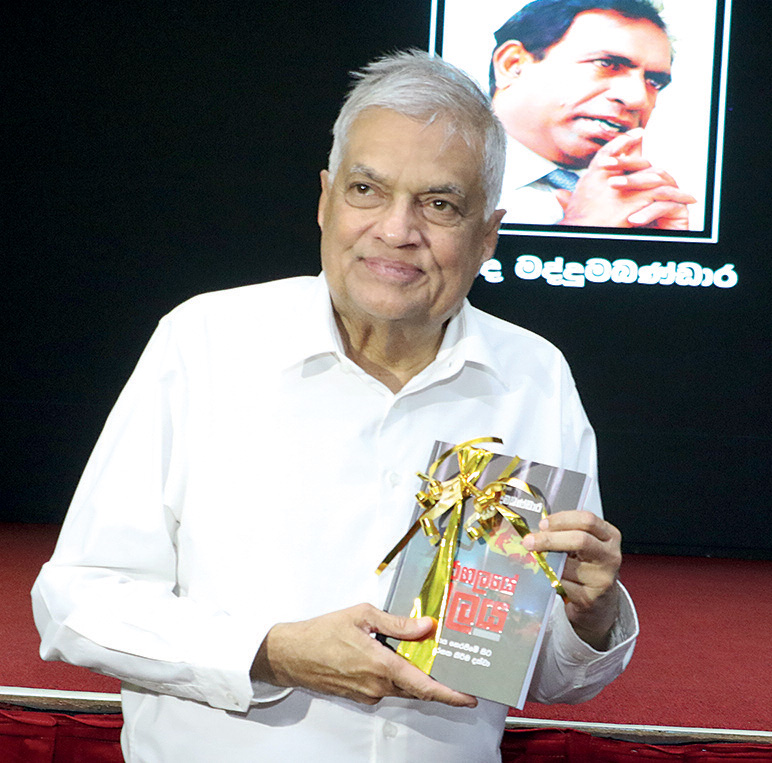
Ex-President Wickremesinghe with a copy of Aragalaye Balaya he received from its author, Prof. Professor Sunanda Maddumabandara, at the Sri Lanka Foundation recently (pic by Nishan S Priyantha)
On the basis of what Abeywardena had disclosed to him, Maddumabanadara also questioned the circumstances of the deployment of the elite Special Task Force (STF) contingent at the compound. The author asked whether that deployment, without the knowledge of the Speaker, took place with the intervention of Baglay.
Aragalaye Balaya
is a must read for those who are genuinely interested in knowing the unvarnished truth. Whatever the deficiencies and inadequacies on the part of the Gotabaya Rajapaksa administration, external powers had engineered a change of government. The writer discussed the issues that had been raised by Prof. Maddumabandara and, in response to one specific query, the author asserted that in spite of India offering support to Gotabaya Rajapaksa earlier to get Ranil Wickremesinghe elected as the President by Parliament to succeed him , the latter didn’t agree with the move. Then both the US and India agreed to bring in the Speaker as the Head of State, at least for an interim period.
If Speaker Abeywardena accepted the offer made by India, on behalf of those backing the dastardly US backed project, the country could have experienced far reaching changes and the last presidential election may not have been held in September, 2004.
After the conclusion of his extraordinary assignment in Colombo, Baglay received appointment as New Delhi’s HC in Canberra. Before Colombo, Baglay served in Indian missions in Ukraine, Russia, the United Kingdom, Nepal and Pakistan (as Deputy High Commissioner).
Baglay served in New Delhi, in the office of the Prime Minister of India, and in the Ministry of External Affairs as its spokesperson, and in various other positions related to India’s ties with her neighbours, Europe and multilateral organisations.
Wouldn’t it be interesting to examine who deceived Weerawansa and Thoradeniya who identified US Ambassador Chung as the secret visitor to the Speaker’s residence. Her high-profile role in support of the project throughout the period 31 March to end of July, 2022, obviously made her an attractive target but the fact remains it was Baglay who brought pressure on the then Speaker. Mahinda Yapa Abeywardena’s clarification has given a new twist to “Aragalaya’ and India’s diabolical role.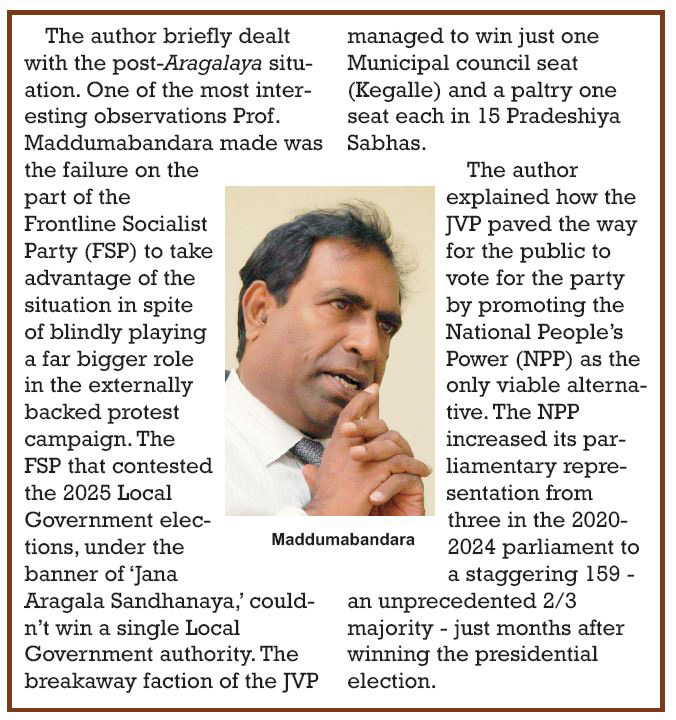
Absence of investigations
Sri Lanka never really wanted to probe the foreign backed political plot to seize power by extra-parliamentary means. Although some incidents had been investigated, the powers that be ensured that the overall project remained uninvestigated. In fact, Baglay’s name was never mentioned regarding the developments, directly or indirectly, linked to the devious political project. If not for Prof. Maddumabandara taking trouble to deal with the contentious issue of regime change, Baglay’s role may never have come to light. Ambassador Chung would have remained the target of all those who found fault with US interventions. Let me be clear, the revelation of Baglay’s clandestine meeting with the Speaker didn’t dilute the role played by the US in Gotabaya Rajapaksa’s removal.
If Prof. Maddumabandara propagated lies, both the author and Abeywardana should be appropriately dealt with. Aragalaye Balaya failed to receive the desired or anticipated public attention. Those who issue media statements at the drop of a hat conveniently refrained from commenting on the Indian role. Even Abeywardena remained silent though he could have at least set the record straight after Ambassador Chung was accused of secretly meeting the Speaker. Abeywardena could have leaked the information through media close to him. Gotabaya Rajapaksa and Ranil Wickremesinghe, too, could have done the same but all decided against revealing the truth.
A proper investigation should cover the period beginning with the declaration made by Gotabaya Rajapaksa’s government, in April 2022, regarding the unilateral decision to suspend debt repayment. But attention should be paid to the failure on the part of the government to decide against seeking assistance from the International Monetary Fund (IMF) to overcome the crisis. Those who pushed Gotabaya Rajapaksa to adopt, what they called, a domestic solution to the crisis created the environment for the ultimate collapse that paved the way for external interventions. Quite large and generous Indian assistance provided to Sri Lanka at that time should be examined against the backdrop of a larger frightening picture. In other words, India was literally running with the sheep while hunting with the hounds. Whatever the criticism directed at India over its role in regime change operation, prompt, massive and unprecedented post-Cyclone Ditwah assistance, provided by New Delhi, saved Sri Lanka. Rapid Indian response made a huge impact on Sri Lanka’s overall response after having failed to act on a specific 12 November weather alert.
It would be pertinent to mention that all governments, and the useless Parliament, never wanted the public to know the truth regarding regime change project. Prof. Maddumabandara discussed the role played by vital sections of the armed forces, lawyers and the media in the overall project that facilitated external operations to force Gotabaya Rajapaksa out of office. The author failed to question Wickremesinghe’s failure to launch a comprehensive investigation, with the backing of the SLPP, immediately after he received appointment as the President. There seems to be a tacit understanding between Wickremesinghe and the SLPP that elected him as the President not to initiate an investigation. Ideally, political parties represented in Parliament should have formed a Special Parliamentary Select Committee (PSC) to investigate the developments during 2019 to the end of 2022. Those who had moved court against the destruction of their property, during the May 2022 violence directed at the SLPP, quietly withdrew that case on the promise of a fresh comprehensive investigation. This assurance given by the Wickremesinghe government was meant to bring an end to the judicial process.
When the writer raised the need to investigate external interventions, the Human Rights Commission of Sri Lanka (HRCSL) sidestepped the issue. Shame on the so-called independent commission, which shows it is anything but independent.
Sumanthiran’s proposal
Since the eradication of the Liberation Tigers of Tamil Eelam (LTTE) in May 2009, the now defunct Tamil National Alliance’s (TNA) priority had been convincing successive governments to withdraw the armed forces/ substantially reduce their strength in the Northern and Eastern Provinces. The Illankai Thamil Arasu Kadchi (ITAK)-led TNA, as well as other Tamil political parties, Western powers, civil society, Tamil groups, based overseas, wanted the armed forces out of the N and E regions.
Abeywardena also revealed how the then ITAK lawmaker, M.A. Sumanthiran, during a tense meeting chaired by him, in Parliament, also on 13 July, 2022, proposed the withdrawal of the armed forces from the N and E for redeployment in Colombo. The author, without hesitation, alleged that the lawmaker was taking advantage of the situation to achieve their longstanding wish. The then Speaker also disclosed that Chief Opposition Whip Lakshman Kiriella and other party leaders leaving the meeting as soon as the armed forces reported the protesters smashing the first line of defence established to protect the Parliament. However, leaders of minority parties had remained unruffled as the situation continued to deteriorate and external powers stepped up efforts to get rid of both Gotabaya Rajapaksa and Ranil Wickremesinghe to pave the way for an administration loyal and subservient to them. Foreign powers seemed to have been convinced that Speaker Abeywardena was the best person to run the country, the way they wanted, or till the Aragalaya mob captured the House.
The Author referred to the role played by the media, including social media platforms, to promote Gotabaya Rajapaksa’s successor. Maddumamabandara referred to the Hindustan Times coverage to emphasise the despicable role played by a section of the media to manipulate the rapid developments that were taking place. The author also dealt with the role played by the Janatha Vimukthi Peramuna (JVP) in the project with the focus on how that party intensified its actions immediately after Gotabaya Rajapaksa stepped down.
Disputed assessment
The Author identified Ministers Bimal Rathnayaka, Sunil Handunetti and K.D. Lal Kantha as the persons who spearheaded the JVP bid to seize control of Parliament. Maddumabanda unflinchingly compared the operation, mounted against Gotabaya Rajapaksa, with the regime change operations carried out in Iraq, Libya, Egypt and Ukraine. Asserting that governments loyal to the US-led Western block had been installed in those countries, the author seemed to have wrongly assumed that external powers failed to succeed in Sri Lanka (pages 109 and 110). That assertion is utterly wrong. Perhaps, the author for some unexplained reasons accepted what took place here. Nothing can be further from the truth than the regime change operation failed (page 110) due to the actions of Gotabaya Rajapaksa, Mahinda Yapa Abeywardana and Ranil Wickremesinghe. In case, the author goes for a second print, he should seriously consider making appropriate corrections as the current dispensation pursues an agenda in consultation with the US and India.
The signing of seven Memorandums of Understanding (MoUs) with India, including one on defence, and growing political-defence-economic ties with the US, have underscored that the JVP-led National People’s Power (NPP) may not have been the first choice of the US-India combine but it is certainly acceptable to them now.
The bottom line is that a democratically elected President, and government, had been ousted through unconstitutional means and Sri Lanka meekly accepted that situation without protest. In retrospect, the political party system here has been subverted and changed to such an extent, irreparable damage has been caused to public confidence. External powers have proved that Sri Lanka can be influenced at every level, without exception, and the 2022 ‘Aragalaya’ is a case in point. The country is in such a pathetic state, political parties represented in Parliament and those waiting for an opportunity to enter the House somehow at any cost remain vulnerable to external designs and influence.
Cyclone Ditwah has worsened the situation. The country has been further weakened with no hope of early recovery. Although the death toll is much smaller compared to that of the 2004 tsunami, economic devastation is massive and possibly irreversible and irreparable.
By Shamindra Ferdinando
Features
Radiance among the Debris
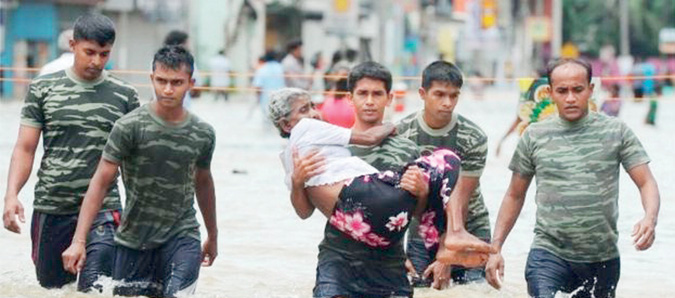
Over the desolate watery wastes,
Dulling the glow of the fabled Gem,
There opens a rainbow of opportunity,
For the peoples North and South,
To not only meet and greet,
But build a rock-solid bridge,
Of mutual help and solidarity,
As one undivided suffering flesh,
And we are moved to say urgently-
‘All you who wax so lyrically,
Of a united nation and reconciliation,
Grab this bridge-building opportunity.’
By Lynn Ockersz
-

 News4 days ago
News4 days agoOver 35,000 drug offenders nabbed in 36 days
-

 Features2 days ago
Features2 days agoFinally, Mahinda Yapa sets the record straight
-

 Business6 days ago
Business6 days agoLOLC Finance Factoring powers business growth
-

 News3 days ago
News3 days agoCyclone Ditwah leaves Sri Lanka’s biodiversity in ruins: Top scientist warns of unseen ecological disaster
-

 News6 days ago
News6 days agoCPC delegation meets JVP for talks on disaster response
-

 News6 days ago
News6 days agoA 6th Year Accolade: The Eternal Opulence of My Fair Lady
-

 News4 days ago
News4 days agoRising water level in Malwathu Oya triggers alert in Thanthirimale
-
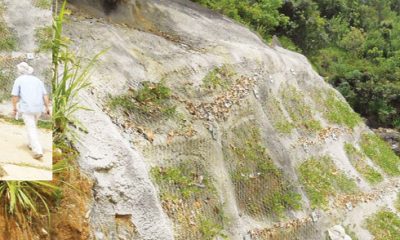
 Features5 days ago
Features5 days agoThe Catastrophic Impact of Tropical Cyclone Ditwah on Sri Lanka:












